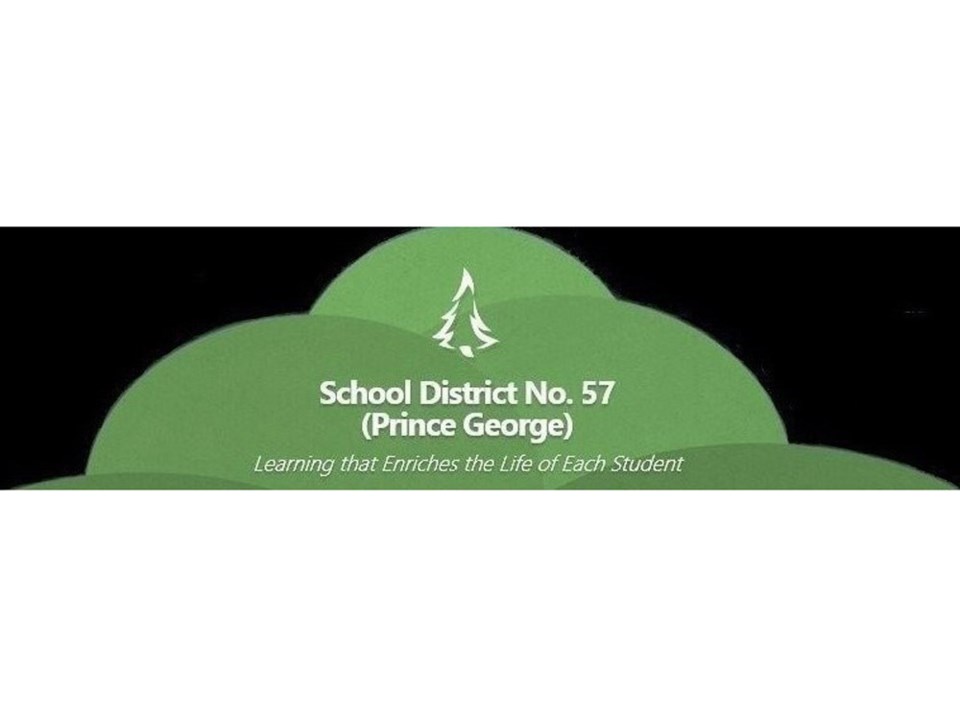Students attending secondary schools in Prince George will see a major change in the way their courses are delivered when they head back to class in September as part of a strategy to limit the size of their so-called learning groups.
The school year will be divided into quarters in which students will be taking two courses at a time, down from the traditional load of four course spread over a half-year. The net effect will be that they travel in cohorts or learning groups of 60 to 70 people, staff included, roughly half the 120 approved by the provincial health office.
It was one of the aspects School District 57 board chair Tim Bennett and superintendent Anita Richardson highlighted when they fielded questions from local media on Wednesday, the same day the school district's restart plan for the 2020-21 school year.
Found at www.sd57.bc.ca, the densely-written 20-page document sets out the policies and procedures principals, teachers and students must follow in answer to the COVID-19 pandemic. School districts across the province were required to make their plans public on Wednesday.
Richardson, who began her career as a teacher at Mackenzie Secondary School, said the system also known as the "modified Copernican" system, was in place at that time. It saw her deliver one class in the morning and one in the afternoon and Richardson said she was "highly disappointed" when it was scrapped in favour of a different approach.
"I actually felt that as a high school math and science teacher that I had better quality one-on-one time with students," Richardson said. "There were fewer transitions for students who struggled with transitions for their day, that allowed for a more stable classroom environment."
The step drew a mixed review from Prince George and District Teachers Association president Joanne Hapke. She said the cohorts will still amount to only two classes, meaning each of them will house upwards of 30 students and staff.
"To keep their cohort numbers lower than the Provincial Health Officer recommended is great, but it's not going to solve the problem of physical distancing," Hapke said. "Our classrooms are only so big."
According to the Ministry of Education, physical distancing will not be required for students when they are within their learning groups, must remain two-metres away from others outside their group and, when that is impossible, they must wear a mask.
High school students in Valemount and McBride will remain on the semester system. In Mackenzie, grades 7 and 8 students will also stay on the semester system while those in 9-12 will take their courses on a quarterly basis like in Prince George.
At the elementary level, no plan to reduce the cohorts below the provincially-approved 60 people will be in place in School District 57.
"There is a misperception that I'm hearing from the community," Bennett said. "Parents are concerned that when when a learning group size is 60, we'll be shoving 60 kids into a classroom together.
"Your kindergarten size classes are still going to be 18. Class sizes are bargained and part of the collective agreement, those aren't going to change.
"Where you'll see your cohorts bunched together is say at lunchtime where you may have two or three classes under that 60 kids all outside for lunch at the same time. Or there may be an opportunity, if you're doing a nature hike, classes from a learning group may go together on that hike."
Richardson said the school district's distance learning program is at capacity and a waiting list is now in place.
"Right now, we're full to the capacity we currently staff and if we need to add more staffing we will look at that as a possibility," Richardson said.
The lack of distance learning as a "true option" is a sore spot for Hapke. She said some of the $242 million the provincial government will receive from the federal government should go towards the service as a way to reduce density in classrooms.


